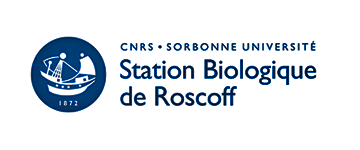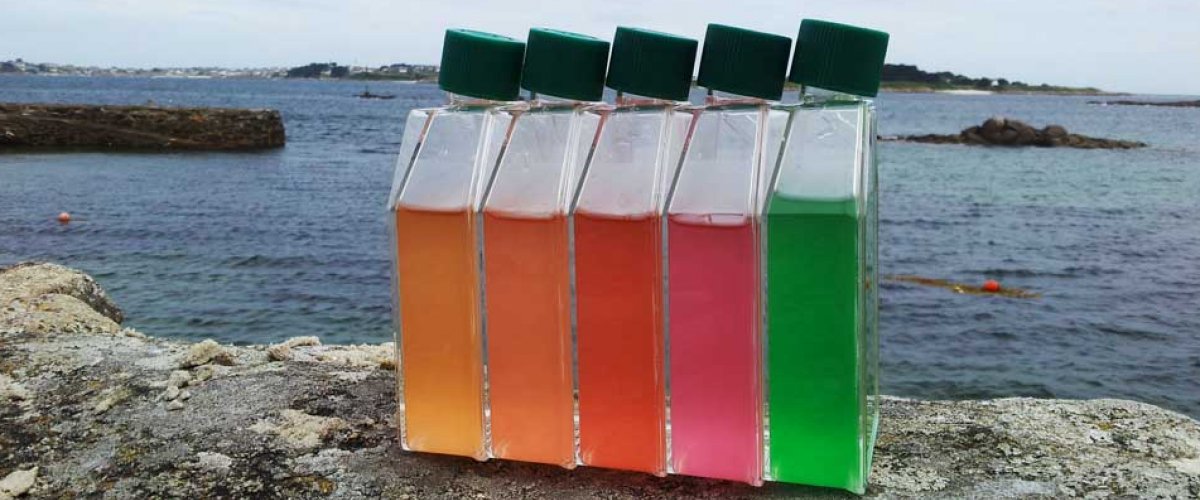Presentation
Synechococcus as a model genus for studying adaptation of marine phytoplankton to environmental changes
How the phytoplankton adapt to gobal change ?
Synechococcus cyanobacteria are among the most pertinent biological models to tackle this question ...
Oceans are particularly affected by global change, which can cause e.g. increases in average sea temperature and in UV radiation fluxes onto ocean surface or a shrinkage of nutrient-rich areas. This raises the question of the capacity of marine photosynthetic microorganisms to cope with these environmental changes both at short term (physiological plasticity) and long term (e.g. gene alterations or acquisitions causing changes in fitness in a specific niche).
Synechococcus cyanobacteria are among the most pertinent biological models to tackle this question, because of their ubiquity and wide abundance in the field, which allow them to be studied at all levels of organization from genes to the global ocean.
In SAMOSA, we plan to develop a systems biology approach to characterize and model the main acclimation (i.e., physiological) and adaptation (i.e. evolutionary) mechanisms involved in the differential responses of Synechococcus clades/ecotypes to environmental fluctuations, with the goal to better predict their respective adaptability, and hence dynamics and distribution, in the context of global change.
First, we will measure, on synchronized and asynchronized cultures of the model Synechococcus strain WH7803, the effects of a variety of environmental stresses (high light, high and low temperature, UV exposure) on the whole transcriptome and a number of key physiological processes. These data, complemented with published data on oxidative and nutrient stress, will allow us to build a first global gene regulation network.
Using the same approach, we will then study the effects of high light and temperature stresses on four additional Synechococcus strains, representative of the most abundant clades in the field, with the aim to unveil ecotype-specific responses. This will allow us to add subnetworks to the global gene regulation model that will translate the extent of ecotypic variability of the stress response within the Synechococcus genus.
In parallel, systematic comparisons of the 42 marine Synechococcus genomes available, including 2 to 10 strains for each clade, will allow us to identify the ecotype-specific core genomes. Knowledge of these gene sets should allow us to decipher the genetic basis of specific adaptive responses to changes in environmental factors among ecotypes.
By combining comparative genomics and transcriptomics analyses, we expect to delineate a limited set of genes that are both ecotype-specific and differentially regulated in response to one or several specific stresses. Such genes will constitute privileged targets for further functional analyses, including gene knockout approaches followed by physiological characterization of the mutants.
The role of these genes in stress adaptation of Synechococcus ecotypes will be further checked by screening metagenomes and metatranscriptomes from various oceanic regions and depths showing contrasted environmental parameters, which we will get from the TARA-Oceans cruise and other sources.
The SAMOSA project is both ambitious by the extent and variety of analyses that will be made and innovative since it proposes to build a gene regulation network not limited to a 'model strain', but including ecotypic variability, an important step towards the development of a 'model genus'.
We aim at constructing a gene network model sufficiently flexible to allow the integration of forthcoming transcriptomic and physiological data. Many results should be extendable to other ecosystems, since relatives of these microorganisms are found in virtually all illuminated aquatic environments including rivers, lakes, hotsprings, etc.
Other outcomes include a better appraisal of the ecosystemic and industry-related services potentially offered by these marine cyanobacteria, and hence will be useful for durable management and valorization of marine ecosystems in which these microorganisms constitute a significant and potentially exploitable component.











